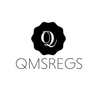Introduction
In the realm of medical devices, risk management is not just a regulatory requirement; it's a vital aspect of ensuring patient safety and product quality. ISO 14971 is the internationally recognized standard that sets the framework for managing risks associated with medical devices. To navigate this complex landscape effectively, organizations often turn to specialized training. In this blog, we will explore the advantages of enrolling in the QMSREGS ISO 14971 training course and how it can empower professionals and organizations in the field of medical devices.
Understanding ISO 14971
ISO 14971 is a fundamental standard that outlines the principles and requirements for the management of risk associated with medical devices. Compliance with this standard is crucial for anyone involved in the design, development, manufacturing, or distribution of medical devices. ISO 14971 ensures that risks are identified, assessed, and controlled throughout a medical device's lifecycle, ultimately safeguarding patients and improving product quality.
The Challenge of ISO 14971 Implementation
Implementing ISO 14971 can be a complex undertaking. Understanding the nuances of the standard and applying them effectively to your organization's processes is not a straightforward task. This is where the QMSREGS ISO 14971 training course becomes invaluable.
Benefits of QMSREGS ISO 14971 Training Course
1. Comprehensive Coverage
The QMSREGS ISO 14971 training course offers a comprehensive coverage of the standard's requirements. Participants gain an in-depth understanding of the principles, methodologies, and best practices for medical device risk management. This knowledge is foundational for establishing effective risk management processes.
2. Expert Guidance
The trainers at QMSREGS are experts in the field of medical device risk management. They bring a wealth of industry knowledge and regulatory expertise to the training sessions. Learning from seasoned professionals ensures that participants receive the most accurate and up-to-date information.
3. Practical Application
The course goes beyond theory by providing practical insights and real-world examples. Participants learn how to apply the principles of ISO 14971 to their specific devices and organizational contexts. This hands-on approach ensures that the training is not just theoretical but directly applicable.
4. Customized Learning
Every organization and medical device is unique, and the QMSREGS training course recognizes this. It allows participants to tailor their learning experience to their organization's specific needs, ensuring that the training is relevant and actionable.
5. Compliance Confidence
Achieving and maintaining compliance with ISO 14971 is a critical objective. The QMSREGS training course equips professionals with the knowledge and tools needed to ensure that their organization's risk management processes align with the standards, reducing the risk of non-compliance.
6. Cost-Effective Training
Developing an in-house ISO 14971 training program can be time-consuming and expensive. The QMSREGS training course offers a cost-effective alternative, saving organizations the costs associated with designing and delivering internal training.
Conclusion
In the medical device industry, effective risk management is not negotiable—it's an ethical and regulatory imperative. The QMSREGS ISO 14971 training course is a powerful resource that empowers professionals and organizations to master the art of medical device risk management.
Investing in ISO 14971 training is an investment in patient safety, product quality, and regulatory compliance. With the QMSREGS training course, you can equip your team with the knowledge and skills needed to navigate the complex landscape of medical device risk management with confidence. By doing so, you not only meet regulatory requirements but also enhance the safety and effectiveness of your medical devices, ultimately benefiting both your organization and the patients you serve.

